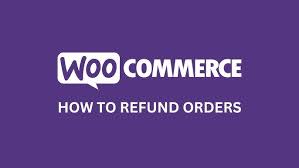Refunds are a natural part of running an online store, helping you resolve customer issues and maintain trust. WooCommerce simplifies the refund process, whether you’re returning a single item or processing a full order. This step-by-step guide walks you through refunding an order, using a PayPal-paid order as an example, with clear instructions to keep your store operations smooth.
Step 1: Access the Order for Refund
- Navigate to Orders:
- From your WordPress dashboard, go to WooCommerce > Orders.
- Find a Completed order (or Processing, if applicable) to refund. Orders in Pending Payment or Failed typically aren’t refundable yet.
- Open the Order:
- Select a completed order, e.g., one paid via PayPal.
- Click View (in the Actions column), the Order Number, or the Edit link (appears on hover) to enter the order details.
Step 2: Initiate the Refund
- Locate the Refund Section:
- Scroll to the Order Items section, which lists products, quantities, costs, taxes, shipping, and totals (as noted in the “Managing Orders” guide).
- At the bottom left of this meta box, find the Refund button (available for paid orders).
- Start the Refund Process:
- Click Refund.
- This doesn’t process the refund immediately—it opens fields to configure what to refund.
Step 3: Configure Refund Details
- Refund Fields:
- For each product in the order, you’ll see:
- Quantity: Enter how many items to refund (defaults to ordered quantity).
- Total: The refundable amount for that item, auto-calculated based on quantity.
- Below the items:
- Amount Already Refunded: Shows prior refunds (if any).
- Total Amount Available to Refund: Maximum refundable for the order.
- Refund Amount: The amount you’re about to refund (editable for custom amounts).
- Reason for Refund: Optional field to note why (e.g., “Customer returned damaged poster”).
- Example: For an order with one “Woo Ninja Poster” ($19.99), set Quantity to 1. The Total auto-calculates to $19.99.
- For each product in the order, you’ll see:
- Restock Refunded Items:
- A Restock refunded items checkbox appears, checked by default.
- Keep checked to add refunded items back to inventory (e.g., 1 poster returns to stock).
- Uncheck if the item isn’t restockable (e.g., damaged or digital).
- Custom Refund Amount (Optional):
- For partial refunds without returning a product (e.g., 20% off or $5 goodwill), leave Quantity blank and enter the amount in the Refund Amount field, e.g., $5.
- This doesn’t affect stock unless specified.
Step 4: Choose Refund Method
- Refund Options:
- Two buttons appear:
- Refund Manually: Use if your payment gateway doesn’t support automatic refunds.
- Refund via [Gateway] (e.g., Refund via PayPal): Use for supported gateways like PayPal, Stripe, or Braintree (from your prior guides).
- If the gateway doesn’t support WooCommerce refunds, only the manual option shows.
- Two buttons appear:
- Manual Refund:
- Click Refund Manually to record the refund in WooCommerce.
- Log in to your payment gateway’s dashboard (e.g., PayPal) separately to issue the actual refund to the customer.
- Update the order status in WooCommerce (e.g., to Refunded) if the entire order is returned.
- Refund via PayPal (or Other Gateway):
- Click Refund via PayPal (for our example).
- WooCommerce processes the refund through the gateway, returning the money to the customer instantly.
- The order updates automatically in WooCommerce and the gateway.
- Post-Refund Details:
- After refunding, you’ll see:
- A red Refunded quantity and total under the item (e.g., “1 Woo Ninja Poster, -$19.99”).
- A refund record with number, date, time, and user who processed it.
- A Refunded Total line under the order total, tracking all refunds.
- After refunding, you’ll see:
Step 5: Update Order Status
- Partial Refund:
- For our example (refunding one Woo Ninja Poster but other items remain), leave the order status as Completed (or Processing if still being fulfilled).
- WooCommerce doesn’t auto-change the status for partial refunds.
- Full Refund:
- If the entire order is refunded (all items and amounts), manually change the status to Refunded via the Status dropdown.
- Example: If the Woo Ninja Poster was the only item, set to Refunded after processing.
- Save Changes:
- Click Save Order in the sidebar to confirm all updates (refund details, status, etc.).
Step 6: Test and Verify
- Test the Refund:
- Place a test order using a gateway’s sandbox mode (e.g., PayPal Sandbox).
- Process a refund (partial or full) and confirm:
- The refund appears in the gateway’s dashboard (for automatic refunds).
- Stock updates if Restock was checked (check Products > Inventory).
- The order shows the correct refunded amount and status.
- Customer receives a refund notification (if enabled in WooCommerce > Settings > Emails).
- For manual refunds, simulate the gateway process and verify WooCommerce records.
- Customer Communication:
- Add a Customer Note in the Order Notes section (from “Managing Orders” guide), e.g., “Refunded $19.99 for Woo Ninja Poster due to damage.” This notifies the customer via email and their account.
Pro Tips
- Gateway Support: Use gateways like PayPal or Stripe for seamless automatic refunds to save time (check gateway settings in WooCommerce > Settings > Payments).
- Inventory Accuracy: Always restock physical items unless they’re non-returnable to avoid overselling.
- Clear Records: Use the Reason for Refund field to document issues (e.g., “Defective item”) for internal tracking.
- Customer Trust: Pair refunds with a customer note or email to explain the process, reinforcing goodwill.
- Documentation: Explore WooCommerce’s refund documentation for advanced scenarios, like API refunds or partial tax handling.
Congratulations!
You’ve mastered refunding orders in WooCommerce! By processing a refund for a Woo Ninja Poster via PayPal, you’ve learned how to handle both automatic and manual refunds with ease. Whether it’s a single item or an entire order, you’re ready to keep customers happy and your store running smoothly.
For more guidance, check WooCommerce’s resources or revisit the “Managing Orders” guide for related tasks like status updates
